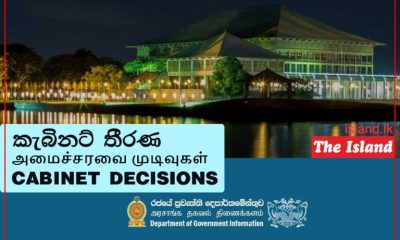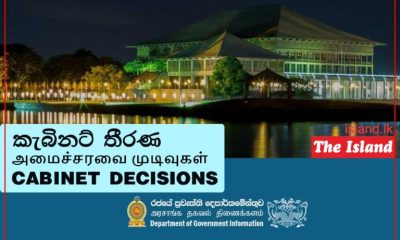Business
Government to support local automotive assembly with 30% locally made automobile components
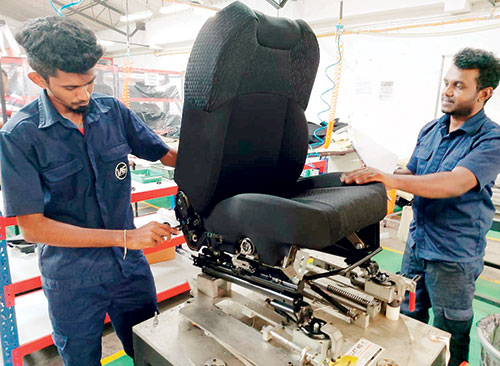
The Sri Lanka Automotive Component Manufacturers’ Association recently announced that the Sri Lanka government is actively seeking to promote automotive assembly with locally secured components, in order to boost the industry and create better job opportunities. The assembly of 100 vehicles will create more than 250 direct jobs and 100 indirect jobs. If 1000 vehicles are assembled, an average of 2500 direct jobs and 1000 indirect jobs will be created ensuring a solid and confident business environment for the manufacturers.
With the local vehicle assembly, component manufacturers will have a strong market to sell their products as well as improve product quality. It will also safeguard the interests of local automotive component manufacturers.
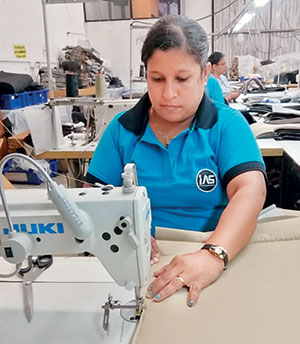 Sharing his views on the progress of this decision, Dimantha Jayawardena, president of the Sri Lanka Automotive Component Manufacturers’ Association said, “Automotive components manufactured by our members are of the highest quality and conform to international standards. They are fast gaining recognition as OEM products by leading automotive manufacturers. Government has offered this industry policy as an incentive to promote the use of at least thirty-percent of the original components from Sri Lankan manufacturers. This policy is monitored by the Ministry of Industry and Supply Chain under minister Wimal Weerawansa, along with the Ministry of Finance. SLACMA is also grateful to Dilum Amunugama, MP, the State Minister of Vehicle Regulation, Passenger Transport Services, Railway Carriages and Automobile Industries for his active support in driving this policy forward.”
Sharing his views on the progress of this decision, Dimantha Jayawardena, president of the Sri Lanka Automotive Component Manufacturers’ Association said, “Automotive components manufactured by our members are of the highest quality and conform to international standards. They are fast gaining recognition as OEM products by leading automotive manufacturers. Government has offered this industry policy as an incentive to promote the use of at least thirty-percent of the original components from Sri Lankan manufacturers. This policy is monitored by the Ministry of Industry and Supply Chain under minister Wimal Weerawansa, along with the Ministry of Finance. SLACMA is also grateful to Dilum Amunugama, MP, the State Minister of Vehicle Regulation, Passenger Transport Services, Railway Carriages and Automobile Industries for his active support in driving this policy forward.”
The Memorandum of Understanding (MoU) signed between the Sri Lanka Automotive Component Manufacturers’ Association and the Automotive Component Manufacturers’ Association of India (ACMA) back in 2017 has supported the SLACMA in various ways including the possibilities to enhance technical collaborations through joint ventures, receive support and guidance in policy matters, obtain assistance in finding OEM partners and knowledge sharing between both associations. Sri Lankan Component Manufacturing has entered the Global Supply Chain by the technical collaboration between Ideal Auto Seating and MSKH India, a joint venture of Magna Worldwide – the largest automotive component manufacturer in the world. Magna Worldwide has its presence in 28 countries with 169,000 employees and 338 manufacturing plants.
SLACMA has submitted a 10-year master-plan to the Finance Ministry as a crucial step to take the Local assembly industry and component supply to the next level, as they seek quality certification from their regional counterparts to boost growth. Currently, the Ministry of Finance and Ministry of Industry and Supply Chain is in the process of obtaining Cabinet approval for the Standard Operating Procedure for local assembly and local auto-component manufacturing.
Automotive components presently manufactured in Sri Lanka
1) Tyres
2) Batteries
3) Rubber Components including Bushes
4) Exhausts Systems
5) Seats and Seating Components
6) Radiators
7) Bumpers and Body Interior Panels
8) Center Consoles
9) Suspension Components
10) Truck Trailers
11) Clutch Systems
12) HVAC Systems
13) Complete Dashboard Systems
14) Steering Racks Including Conversion Kits
15) Cables
16) Wire Harness
17) Oil Filters
18) Air Filters
19) Head Light Manufacturers.
20) Truck Bodies / Bowser / Tractor Trailers – More 300 Manufacturers.
(SLACMA)
Business
Cabinet approves CECB as consultant for renovation of the Karainagar boat yard project
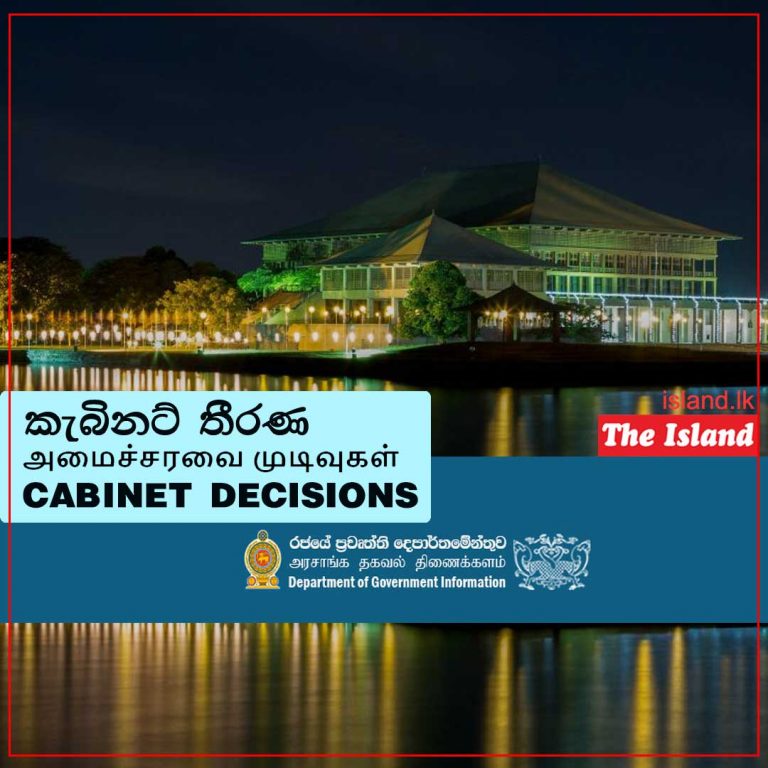
The Cabinet of Ministers has approved the proposal presented by the Minister of Fisheries, Aquatic and Marine Resources to seek the services of the Central Engineering Consultancy Bureau as a consultant for the renovation of the Karainagar boat yard project and allocate 40 million rupees from the Treasury for the expenditure to be borne by the Government of Sri Lanka.
[A memorandum of understanding was signed by the President during his official visit to India in December 2024. , to obtain a grant from the Government of India for the renovation of the Karainagar Boat Yard
According to the MOU, the responsibility of providing the technical consultancy service for the project and exempting the goods and equipment related to the grant from taxes has been assigned to the government of Sri Lanka.]
Business
‘Transformative infrastructure’ installed at Colombo West International Terminal

In a landmark move for Sri Lanka’s logistics landscape, EFL Project Logistics has completed a critical phase of deliveries for the Colombo West International Terminal (CWIT), a transformative infrastructure project poised to reshape the country’s role in global maritime trade.
CWIT—a collaboration between Adani Ports and SEZ Ltd (51%), John Keells Holdings and the Sri Lanka Ports Authority—is set to be the island’s first fully automated deep-water terminal. As it gears up for full commercial operations in 2025, the recent arrival of high-tech port handling equipment marks a key economic inflection point for Sri Lanka.
Speaking exclusively to The Island Financial Review on the impact, Mohamed Niyas, General Manager – Project Logistics at EFL, said, “The logistics we executed for CWIT are more than just cargo movements; they are catalysts for economic transformation. These deliveries—ranging from electric inter-terminal trucks to automated gantry cranes—are essential to positioning Sri Lanka as a sustainable, high-capacity transshipment hub.”
Among the highlights of the operation were 62 state-of-the-art Sany electric trucks and massive quay and gantry cranes, representing not only a technical leap but also a green one. These advancements contribute to CWIT’s eco-efficient design and bolster Colombo’s capacity to handle up to 15 million TEUs by 2026.
Economically, the development of CWIT—and EFL’s role in its expedited setup—signals a push for increased foreign direct investment, enhanced export competitiveness and job creation across the logistics and engineering sectors. As Niyas emphasized, “We are not just helping move cargo; we are enabling national economic value. Every successful delivery brings us closer to a future where Sri Lanka is a leading player in the South Asian maritime corridor.”
With global shipping routes evolving and automation driving next-gen port operations, CWIT is seen as a strategic asset for long-term growth. EFL’s role in the project showcases the kind of logistics innovation necessary to support this ambition—efficient, sustainable and globally competitive.
By Ifham Nizam
Business
Marine Tourism Roadmap for Sri Lanka launched by SLTDA

Sri Lanka marked a major milestone in its tourism development efforts with the official launch of the Marine Tourism Roadmap on April 10 in Colombo. This initiative, led by the Sri Lanka Tourism Development Authority (SLTDA) with support from the Asian Development Bank (ADB) under its technical assistance program TA9881 SRI: Supporting Tourism Resilience, lays the groundwork for a new chapter in tourism and the nation’s blue economy.
The Marine Tourism Roadmap was developed through an extensive process of data collection, stakeholder consultations and site visits conducted by the ADB appointed international consultant together with officials of the SLTDA. The final validation of the Roadmap was done by the Marine Tourism Steering Committee, which included representatives from key marine related public and private sector institutions. International expertise was provided by Ms. Aleksandra Dragozet (CEO & Founder – Sea Going Green), ADB’s appointed marine tourism consultant, whose guidance ensured the strategy aligned with global best practices for sustainable tourism. The SLTDA officials, Dr. Prasad Jayasuriya, Director-Tourism Planning, Development & Investments and S Dadeepan, Assistant Director-Tourism Planning & Development coordinated all meetings, site visits and activities with relevant stakeholders and the Steering Committee.
The Marine Tourism Roadmap emphasizes a balanced approach between conservation and economic development, promoting eco-friendly activities such as diving, snorkeling, ship wreck diving and marine wildlife watching. These activities are designed to support local livelihoods while safeguarding Sri Lanka’s rich marine biodiversity, particularly coral reefs, marine mammals, and fragile coastal habitats that face increasing environmental pressure. The strategy outlines two categories of coastal destinations: areas covering Kalpitiya through Galle to Trincomalee, which possess established marine tourism industries; and areas covering Mannar, Jaffna and the North-Eastern coastal belt, which are recognized for their emerging tourism potential. Notably, Sri Lanka’s ocean territory is nearly seven times larger than its landmass, highlighting the vast, untapped opportunities for marine-based tourism. The roadmap presents both short-term and long-term implementation strategies, aiming to develop sustainable marine tourism infrastructure, enhance visitor experiences, and ensure the protection and resilience of marine ecosystems in the years ahead.
The Roadmap itself was the result of collaboration among stakeholders covering coastal areas of Negombo, Kalpitiya, Mannar, Jaffna, Mullativu, Trincomalee and Galle and also the Steering committee members representing 18 key marine related public and private sector institutions including Presidential Secretariat, Ministry of Tourism and the SLTDA. This unified approach ensured that the document reflects the diverse perspectives of stakeholders directly involved in marine and coastal tourism development.
-

 Business4 days ago
Business4 days agoDIMO pioneers major fleet expansion with Tata SIGNA Prime Movers for ILM
-

 News3 days ago
News3 days agoFamily discovers rare species thought to be extinct for over a century in home garden
-

 Features6 days ago
Features6 days agoNipping the two leaves and the bud
-

 Features6 days ago
Features6 days agoAvurudu celebrations … galore
-

 Features5 days ago
Features5 days agoProf. Lal Tennekoon: An illustrious but utterly unpretentious and much -loved academic
-

 Foreign News3 days ago
Foreign News3 days agoChina races robots against humans in Beijing half marathon
-

 News6 days ago
News6 days agoCounsel for Pilleyan alleges govt. bid to force confession
-

 Editorial4 days ago
Editorial4 days agoSelective use of PTA







